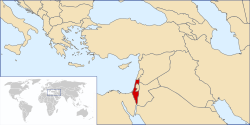Israeli Political Leadership Uses War As Tool For Dampening Social Protest – OpEd
Smadar Lavie (CV) is Scholar in Residence at UC Berkeley, whose academic field is the study of the role of women, particularly Mizrahi women, in Israeli society. She’s just published a fascinating essay that examines three seemingly disparate Israeli social phenomena which have a great deal to tell us about how the Israeli national security state uses the threat of war to dampen social protest and create a false sense of social cohesion.
Her Knafo Chronicles: Marching on Jerusalem with Israel’s Silent Majority highlights connections between the 2003 Single Mothers March, the 2011 Tel Aviv (J14)-Tahrir (Arab Spring) mass protests, and the forthcoming Israeli attack on Iran. The piece demonstrates how Israel uses continual armed conflict with Palestinians and neighboring Muslim states to muffle internal Jewish strife inside Israel.

This past summer, a string of Israelis set themselves on fire to protest their economic disparity. The first was Moshe Silman, whose desperation stemmed from his frustration with the dysfunction of the Israeli social welfare system and the inability of the mass protests of 2011 to create any meaningful social change for Israel’s disenfranchised. This should have resulted in an extraordinary level of international media attention on Israeli-Jewish social justice issues. But the stories gained little traction, as is usual for anything not connected to the Arab-Israeli conflict.
The current Israeli government and those before it have always stood in fear of successful social protests that might threaten their legitimacy in much the same way that the Tahrir Square protests destroyed the rule of Hosni Mubarak. To short-circuit a renewal of the 2011 protests in 2012, both Barak and Netanyahu pressed the importance of Israeli national unity against the Iranian nuclear threat. This had succeeded in quelling the momentum and size of these protests until recently.
Now, those same summer 2011 protesters are once again threatening to mobilize if Netanyahu passes his draconian 2013 national budget. Coincidentally, the Israeli prime minister’s call for new elections, which he will win handily, is yet another attempt to defang the social justice movement. New elections will not only defuse the threat of more social protests related to the controversial budget, they will also divert attention from ever-increasing rent, food, and gas prices.
As Operation Cast Lead–which was conducted in the interim between Obama’s election and his assumption of the presidency–showed, periods when elections are held or when power is being transferred are preferred times for Israel to wage war.
Lavie’s article addresses the relationships between Israeli social protest movements and military actions against the Palestinians and Israel’s neighboring states. Today, preparations for an Israeli attack and possible Iranian retaliatory responses dominate the public sphere, as evidenced by Netanyahu’s speech at the U.N. on September 27, 2012. Lavie suggests that if the protesters do renew their efforts, the likelihood of an attack on Iran greatly increases.
This piece appeared originally in Affilia: A Journal of Women and Social Work, published by SAGE Publications, in August 2012. Because of the article’s timeliness, SAGE Publications has generously made it available for free download, for a limited time. Please disseminate Smadar’s essay widely on Facebook, Twitter and through your e-mail networks.
This article appeared at Tikun Olam
